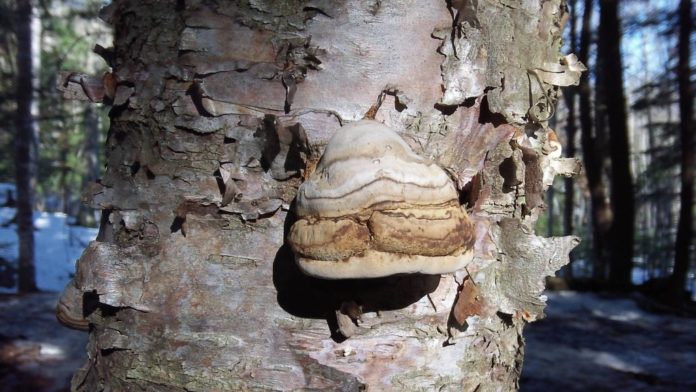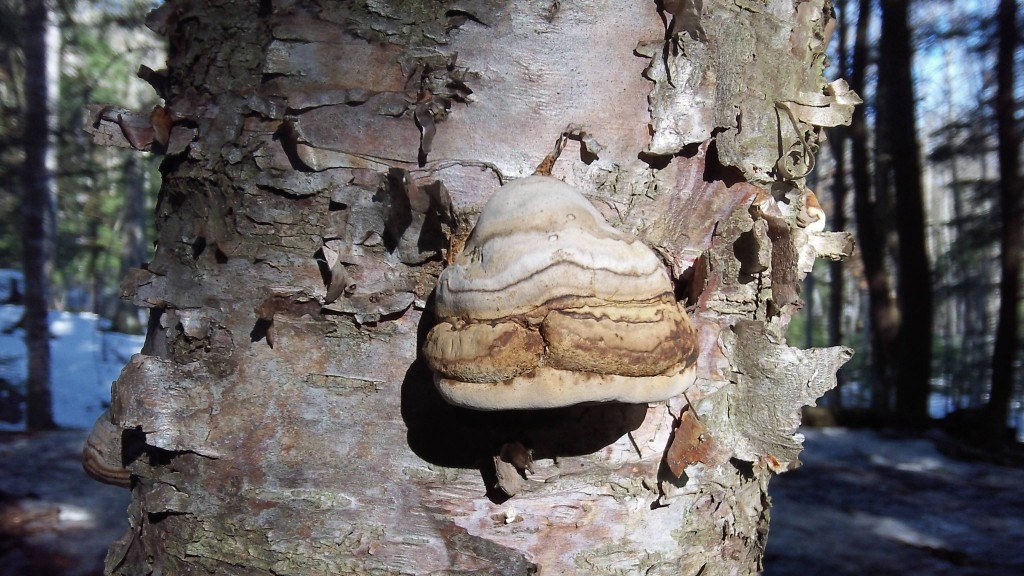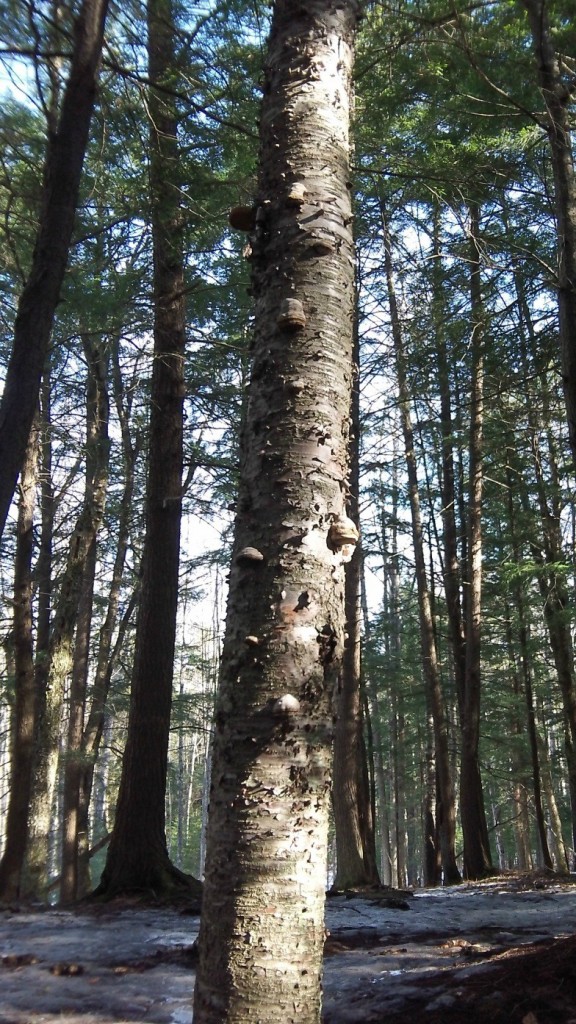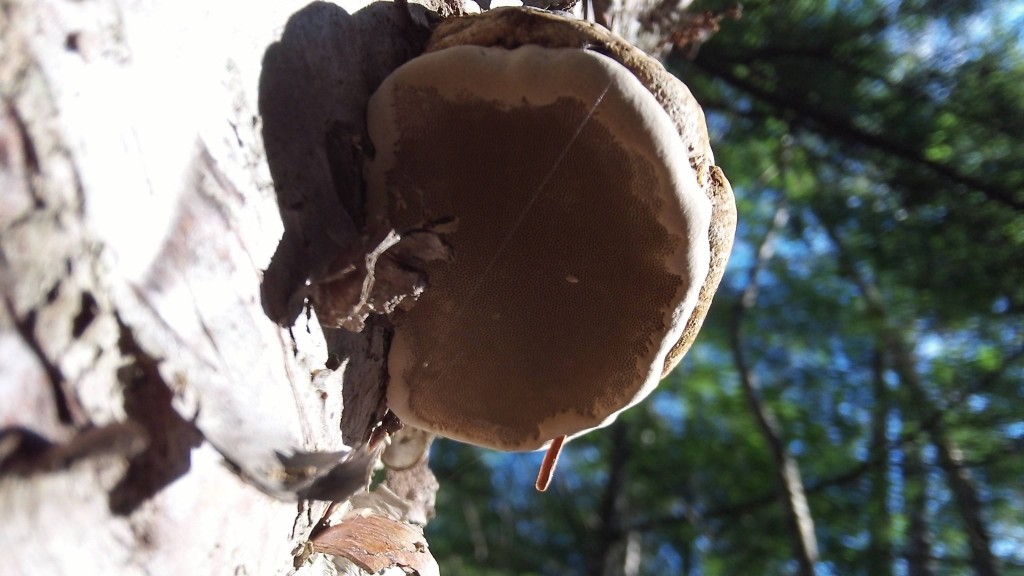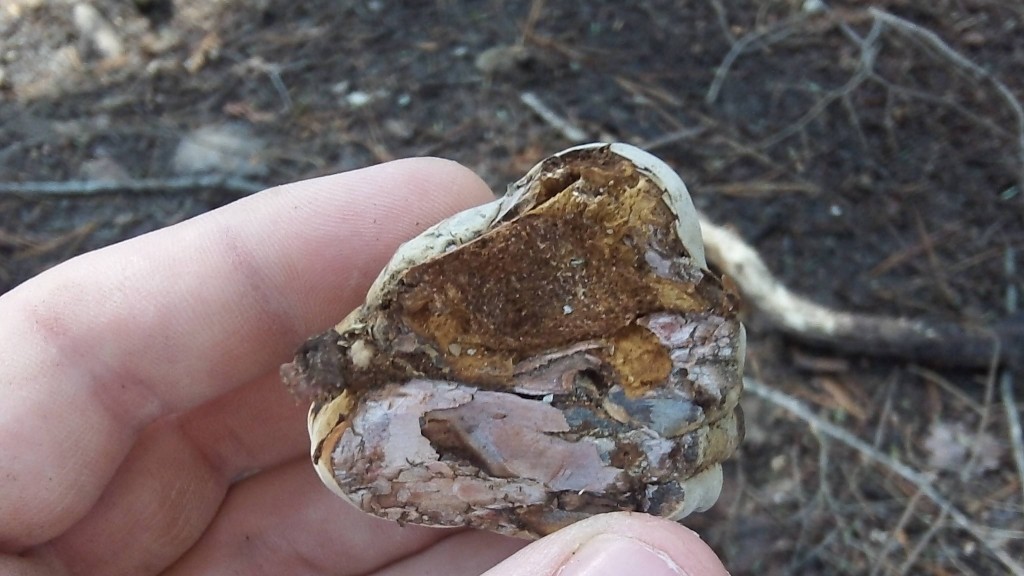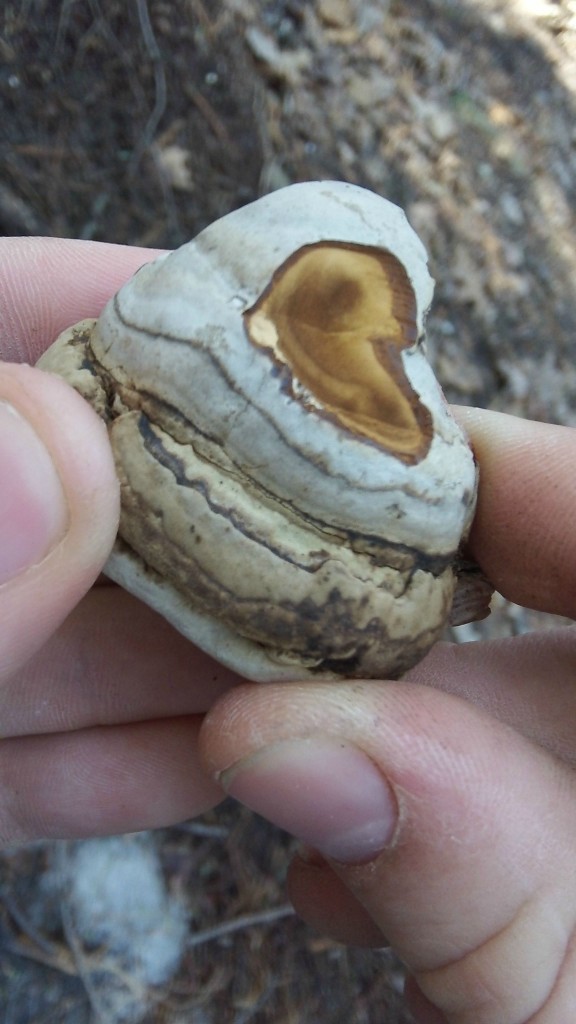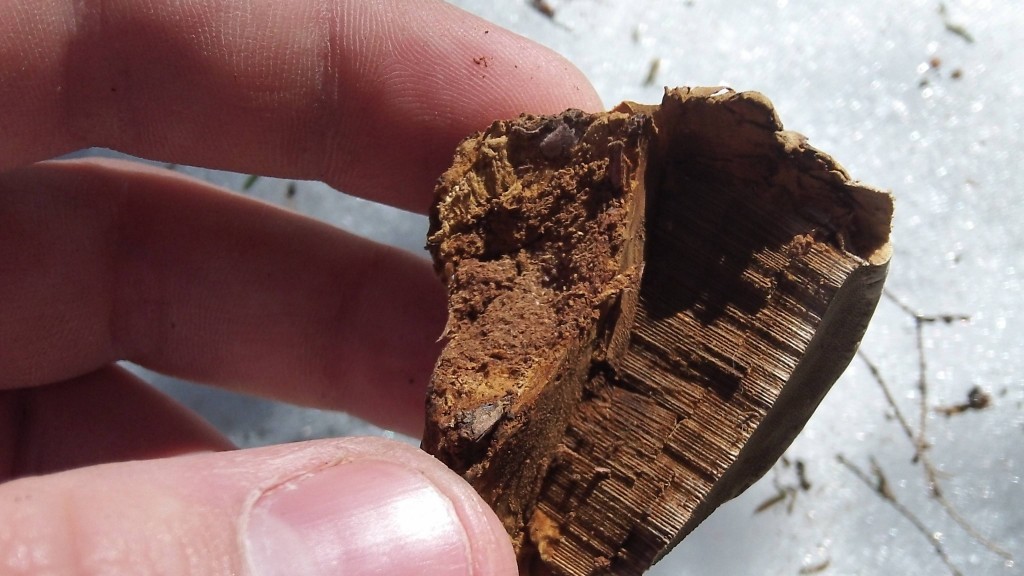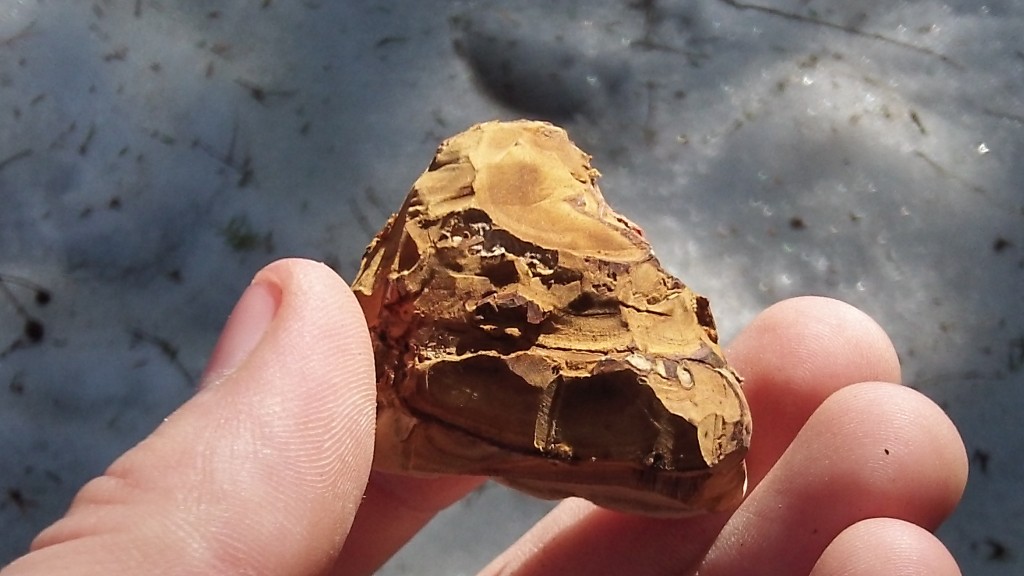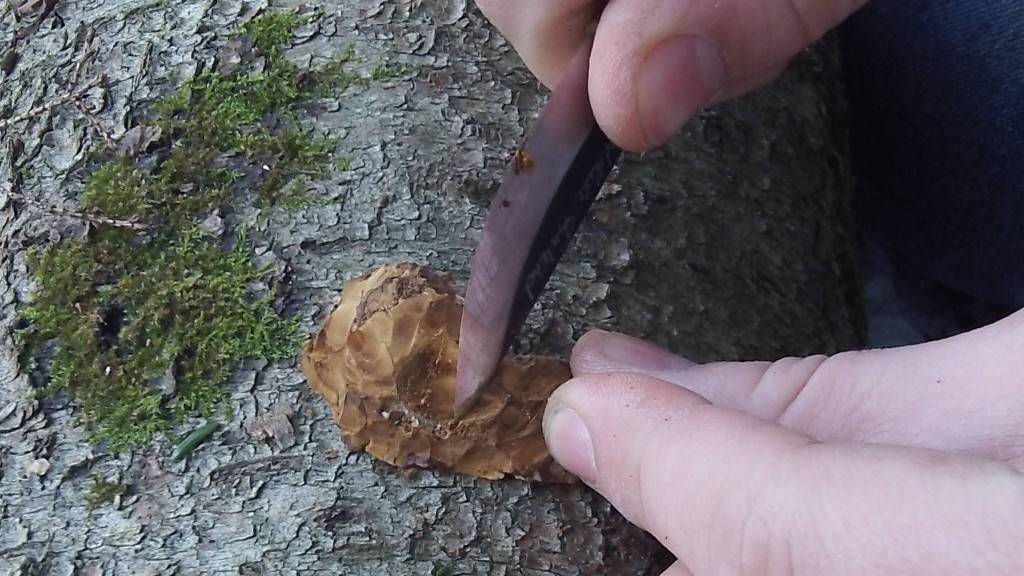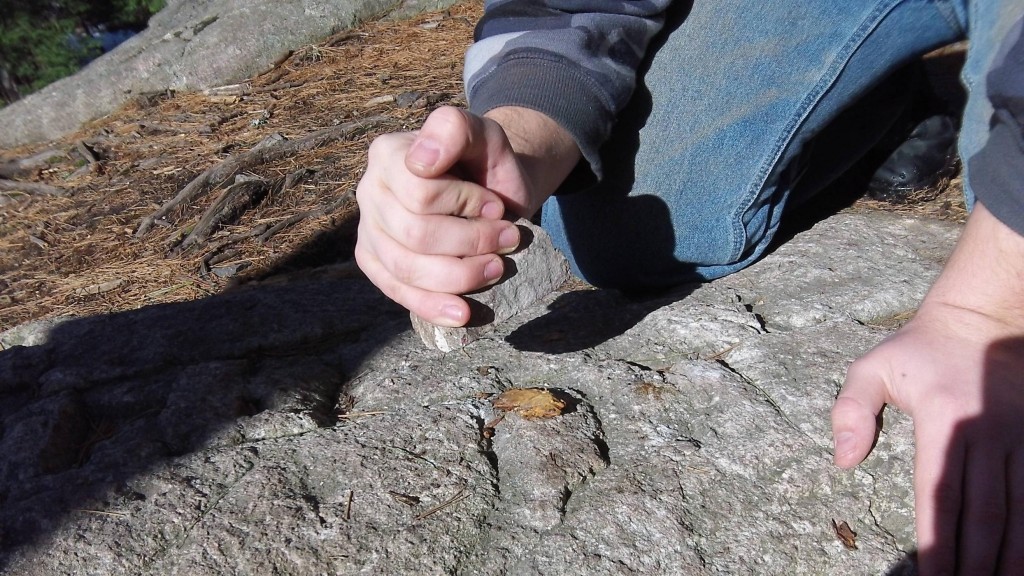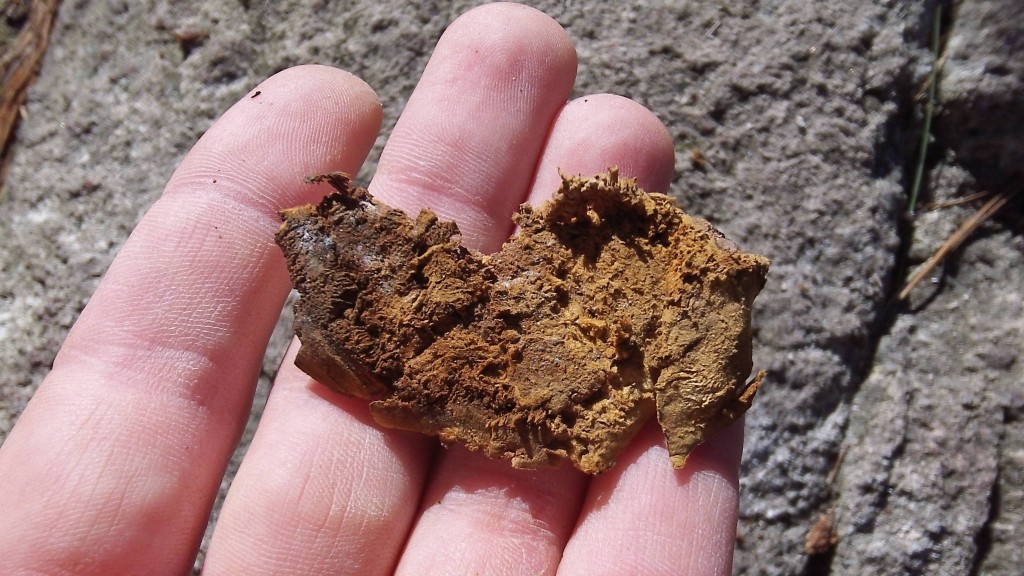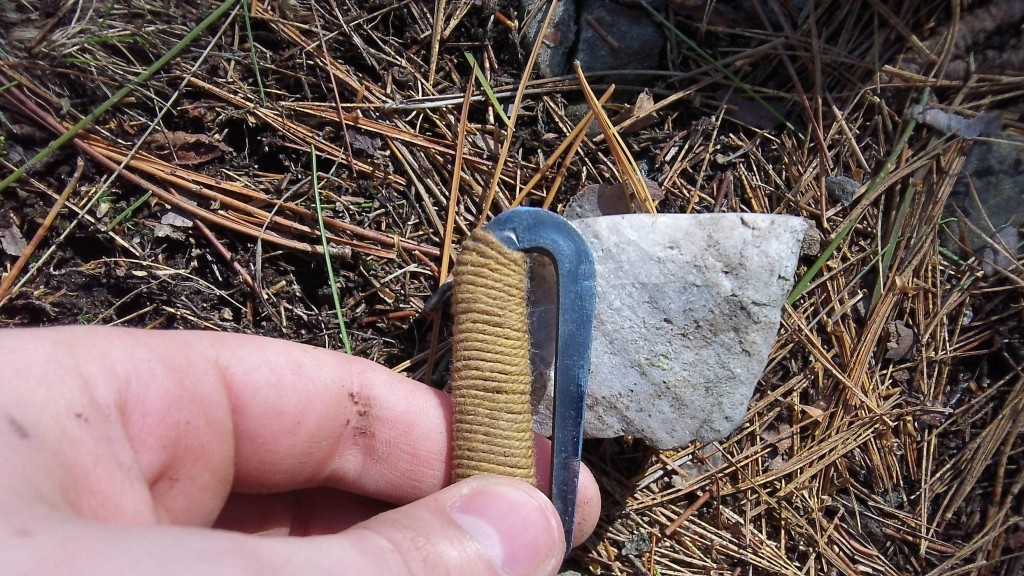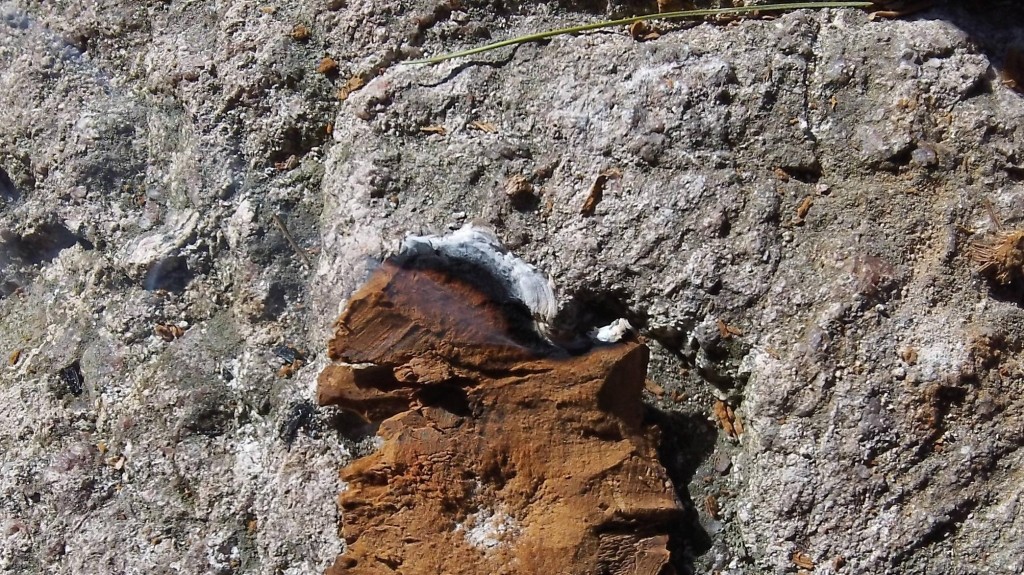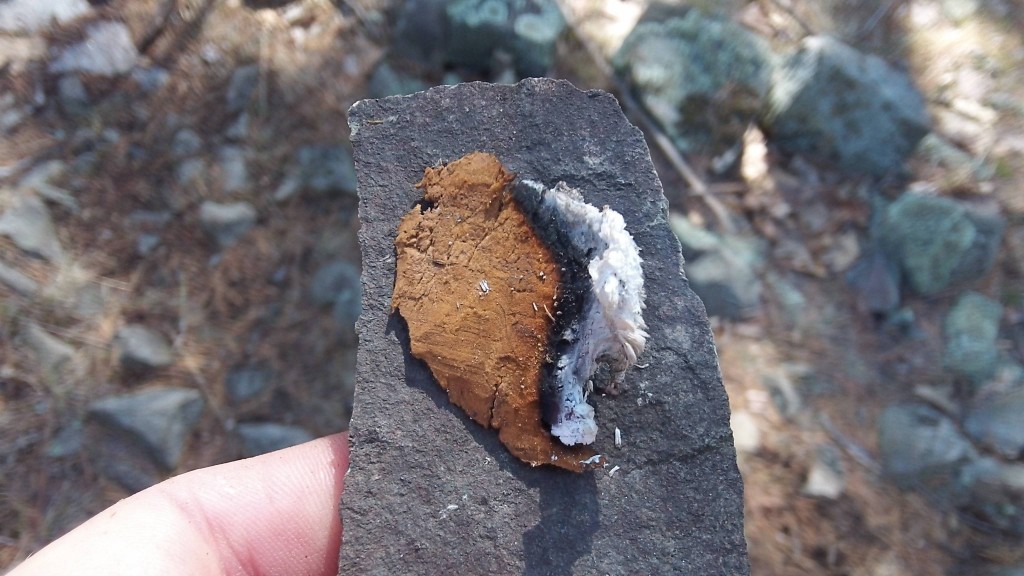Amadou is a spongy, flammable substance prepared from Fomes fomentarius, also known as Horse’s Hoof or Tinder Fungus. Ötzi, the 5,000 year old Iceman, was found to have had amadou as part of his belongings. It was a valuable resource to ancient peoples like Ötzi as it could be used to catch the sparks from flint and iron pyrites or used as a coal extender. Amadou would often be processed, pounded flat, and boiled in a solution of Salt Peter to add to its flammability but will work just fine if found and extracted dry from the Tinder Fungus as a coal extender.
Other uses for amadou include felting as amadou was once used to make hats. In more modern day use, amadou is used to make artificial flies for fly fishing. Amadou may also be felted into pouches or similar products. It’s best to use it for something that will not be treated roughly as it is not the toughest substance. That is enough digression for now; what I want to talk about is Amadou, nature’s char cloth!
This is Fomes fomentarius, the tinder fungus.
I most commonly find it growing on dead and dying birch trees. They tend to grow in clusters dispersed over the birch and are easily spotted from afar.
Here is what a birch tree riddled with tinder fungus looks like at a distance
As you can see by this photograph, tinder fungus is a polypore. This means that, unlike some other mushrooms, this mushroom lacks gills but has tubes or pores all over the bottom of which it disperses its spores.
Often times it may take a good whack from a log or a hatchet to sever the tinder fungus from its bond to the tree. Once the fungus is removed the backside and some of the brown spongy amadou is visible. The brown corky textured substance in the middle is part of the natural char cloth known as amadou.
The extraction process is fairly simple. All you need is a sharp knife and to pay attention to the layers of the fungus that you are carving. The amadou is found just below the outer “shell” of the mushroom and just above the inner core of pores.
A shallow cut reveals the brown, spongy, natural char cloth material.
The light brown substance is what you are trying to preserve. Cut off the darker brown as that is still part of the outer “shell” of the fungus.
Here is a cross-section of the pores. This porous part of the mushroom is not what you are after when extracting amadou. It should be cut from your extraction if any is found hanging on to it.
When you have delicately removed the outer shell you should be left with something that looks like this:
Now, delicately remove the first few centimeters of the spongy substance with your knife. It is a very shallow cut to remove the amadou. When you have completed the cut, it should result in a thin felt or leather-like sheet.
From here it will be necessary to increase the surface area of the amadou. To do so, one beats it with a rock until it is of proper flatness (which takes a little experimenting to get it just right). This also helps rough up the surface giving it even more surface area to catch a spark from a flint and steel or even a ferro rod.
After pounding out the amadou it should take on an even more felt-like nature.
It is now ready to receive a coal or be spark with a flint and steel. The only better thing to do is boil it in a solution of Salt Peter but that is an added and more complex step I will not be discussing in this article.
A flint striker and a sharp edge of quartzite which I dug out of the mountain should work nicely to spark the amadou
Here it is with a nice smolder going. I had timed this single piece of amadou smoldering and it had burned for just over 20 minutes. That is long enough to have a coal and build a new fire or to find and add it to a new piece of coal extender.
The amadou burned very hot. As it got smaller it became unbearable to hold it. To remedy this, one simple may place it on a gathered rock and continue on their way making sure to shield it from the wind lest it blow away.
All that would be needed is to place the smoldering amadou into a dry tinder bundle and blow it to flame for one’s fire to be preserved.


